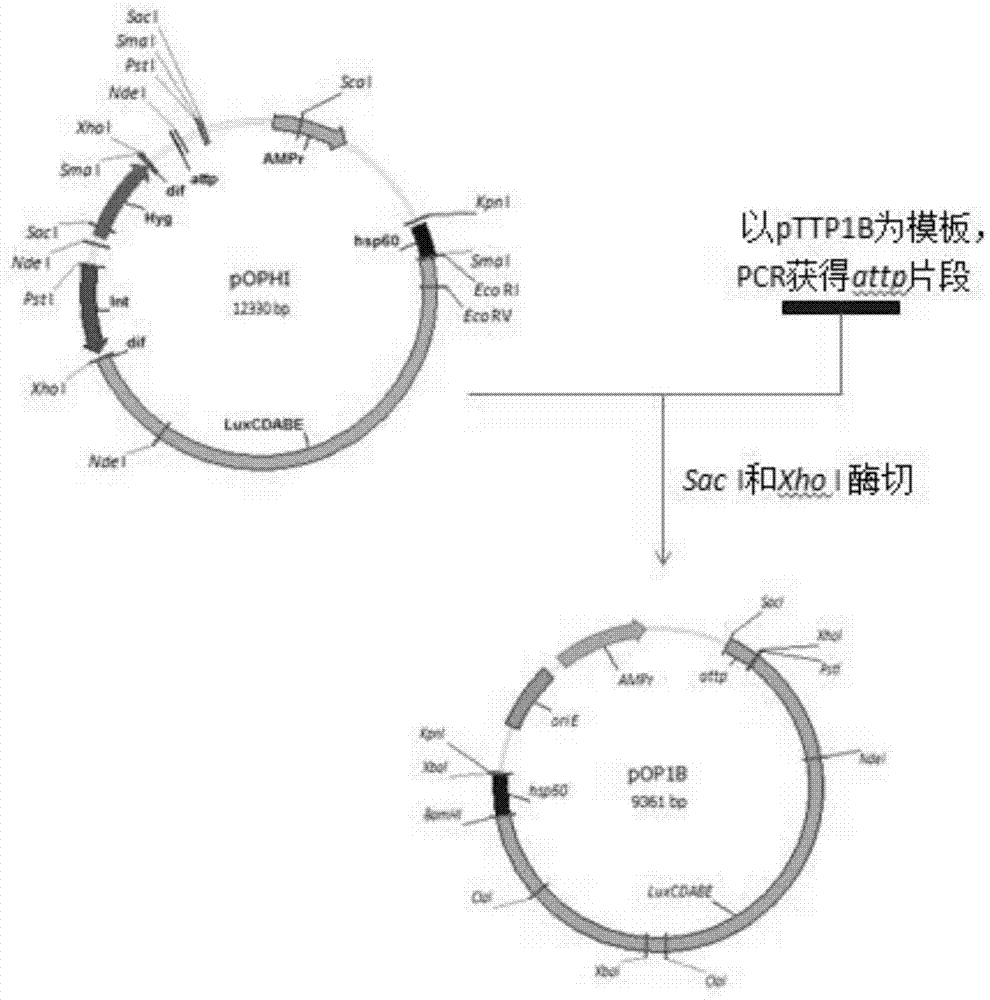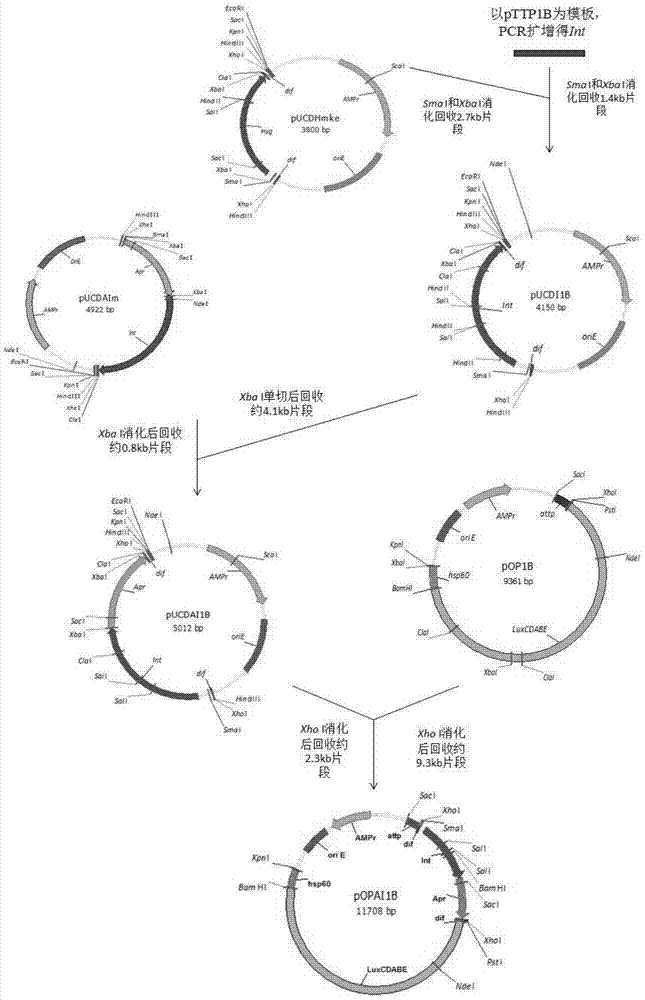Method of constructing selection-marker-free self-luminescent mycobacterium abscessus and establishment of corresponding in-vitro high-flux medicine-screening model
A mycobacterium, self-luminescence technology, applied in the field of Mycobacterium abscessus, can solve the problem of not finding the resistance screening marker of Mycobacterium abscessus, and achieve the effect of convenient detection of drug activity, reduced workload, and saving time for drug screening
- Summary
- Abstract
- Description
- Claims
- Application Information
AI Technical Summary
Problems solved by technology
Method used
Image
Examples
Embodiment 1
[0049] Construct the integrated plasmid pOPAI1B, see the construction procedure Figure 1~3 , for a map of plasmid pOPAI1B see Figure 4 . Such as Figure 4 As shown, the plasmid pOPAI1B contains the mycobacterial strong promoter in the counterclockwise direction ( Hsp60 ), the enzyme gene required for luminescence ( LuxCDABE ), apramycin resistance gene ( April ) (SEQ ID NO:1) and integrase gene ( Int ) (SEQ ID NO:6) fusion gene, a direct repeat sequence located at both ends of the fusion gene DifR (SEQ ID NO:2) and Dif L (SEQ ID NO:3), phage integration site ( attP ) (SEQ ID NO:4), and the ampicillin resistance gene ( Ampr ) and replicators ( rep ). The functions of each component are as follows:
[0050] Hsp60 : A mycobacterial strong promoter, which can promote the strong expression of subsequent genes.
[0051] LuxCDABE : Enzyme gene required for luminescence, the expression of this gene allows the host bacteria to emit light autonomously [5] . ...
Embodiment 2
[0087] Example 2 A preparation method of self-luminescent Mycobacterium abscessus without resistance selection marker
[0088] The 7H9 medium, 7H11 medium, and Tween 80 involved in this example were all purchased from Guangzhou Huaqisheng Biological Company.
[0089] Biorad electroporation instrument (Biorad GenePulser Xcell) and electroporation cup were purchased from Biorad Company.
[0090] 1. Materials to be prepared:
[0091] 1) Mycobacterium abscessus ( Mycobacterium.abscessus )
[0092] 2) 10% glycerol + 0.05% Tween 80 + 20mL glycerin + 180 mL water + 100μL Tween 80, and filter with a 0.2μm filter. It is required to be freshly prepared and not older than 1 week.
[0093] 3) Sterilized glass beads, 50ml centrifuge tube, Biorad 0.2cm electric cup, 25ml pipette.
[0094] 4) 50ml of well-grown bacteria solution in the logarithmic phase [the OD value of the bacteria solution reaches 0.6-1.3]. 1ml tip with filter.
[0095] 2. Electroconversion:
[0096] 1) The ...
PUM
 Login to View More
Login to View More Abstract
Description
Claims
Application Information
 Login to View More
Login to View More - R&D
- Intellectual Property
- Life Sciences
- Materials
- Tech Scout
- Unparalleled Data Quality
- Higher Quality Content
- 60% Fewer Hallucinations
Browse by: Latest US Patents, China's latest patents, Technical Efficacy Thesaurus, Application Domain, Technology Topic, Popular Technical Reports.
© 2025 PatSnap. All rights reserved.Legal|Privacy policy|Modern Slavery Act Transparency Statement|Sitemap|About US| Contact US: help@patsnap.com



